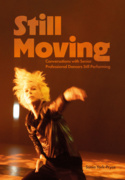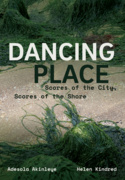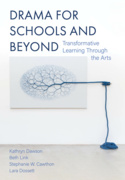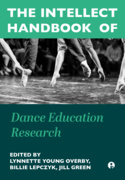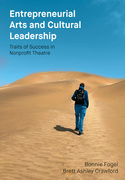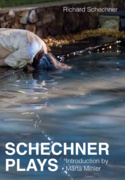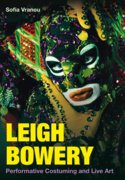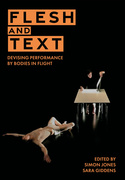Kinesthetic Empathy in Creative and Cultural Practices (Book)
Kinesthetic empathy describes the ability to experience empathy by observing another human being's movements. Kinesthetic Empathy in Creative and Cultural Practices offers innovative and critical perspectives on a variety of topics, encouraging readers to sidestep the methodological and disciplinary boundaries associated with the arts and sciences.
Edition
A key interdisciplinary concept in our understanding of social interaction across creative and cultural practices, kinesthetic empathy describes the ability to experience empathy merely by observing the movements of another human being. Encouraging readers to sidestep the methodological and disciplinary boundaries associated with the arts and sciences, Kinesthetic Empathy in Creative and Cultural Practices offers innovative and critical perspectives on topics ranging from art to sport, film to physical therapy.
Matthew Reason is a senior lecturer in theatre and the head of MA Studies in Creative Practice at York St. John University in England. He is the author of, most recently, The Young Audience: Exploring and Enhancing Children's Experience of Theatre.
Dee Reynolds is professor of French at the University of Manchester and the author of, among other books, Rhythmic Subjects: Uses of Energy in the Dances of Mary Wigman, Martha Graham and Merce Cunningham.
Foreword – Amelia Jones
Introduction – Dee Reynolds and Matthew Reason
Part I: Mirroring Movements: Empathy and Social Interactions
Introduction – Dee Reynolds
Chapter 1: Knowing Me, Knowing You: Autism, Kinesthetic Empathy and Applied Performance – Nicola Shaughnessy
Chapter 2: Kinesthetic Empathy and Movement Metaphor in Dance Movement Psychotherapy – Bonnie Meekums
Chapter 3: Affective Responses to Everyday Actions – Amy E. Hayes and Steven P. Tipper
Part II: Kinesthetic Engagement: Embodied Responses and Intersubjectivity
Introduction – Dee Reynolds
Chapter 4: Cinematic Empathy: Spectator Involvement in the Film Experience – Adriano D’Aloia
Chapter 5: Musical Group Interaction, Intersubjectivity and Merged Subjectivity – Tal-Chen Rabinowitch, Ian Cross and Pamela Burnard
Chapter 6: Kinesthetic Empathy and the Dance’s Body: From Emotion to Affect – Dee Reynolds
Part III: Kinesthetic Impact: Performance and Embodied Engagement
Introduction – Matthew Reason
Chapter 7: Kinesthetic Empathy in Charlie Chaplin’s Silent Films – Guillemette Bolens
Chapter 8: Effort and Empathy: Engaging with Film Performance – Lucy Fife Donaldson
Chapter 9: Breaking the Distance: Empathy and Ethical Awareness in Performance – Rose Parekh-Gaihede
Part IV: Artistic Enquiries: Kinesthetic Empathy and Practice-Based Research
Introduction – Matthew Reason
Chapter 10: Re-Thinking Stillness: Empathetic Experiences of Stillness in Performance and Sculpture – Victoria Gray
Chapter 11: Empathy and Exchange: Audience Experiences of Scenography – Joslin McKinney
Chapter 12: Photography and the Representation of Kinesthetic Empathy – Matthew Reason, with photographs by Chris Nash
Part V: Technological Practices: Kinesthetic Empathy in Virtual and Interactive Environments
Introduction – Dee Reynolds
Chapter 13: T he Poetics of Motion Capture and Visualisation Techniques: The Differences between Watching Real and Virtual Dancing Bodies – Sarah Whatley
Chapter 14: Interactive Multimedia Performance and the Audience’s Experience of Kinesthetic Empathy – Brian Knoth
Chapter 15: Kinesthetic Empathy Interaction: Exploring the Concept of Psychomotor Abilities and Kinesthetic Empathy in Designing Interactive Sports Equipment – Maiken Hillerup Fogtmann
Conclusion – Dee Reynolds and Matthew Reason
'I have found this a really inspirational book, with wide implications for my own work in Applied Drama.' – David Grant, Lecturer in Drama & Director of Education at Queen's University'A highly stimulating prompt to consider forms of 'non-discursive' knowledge' – Simon Parry for New Theatre Quarterly'The book offers a progressive awareness of how kinesthetic empathy can evolve varied disciplines' – Theatre Research International, Ananda Breed






